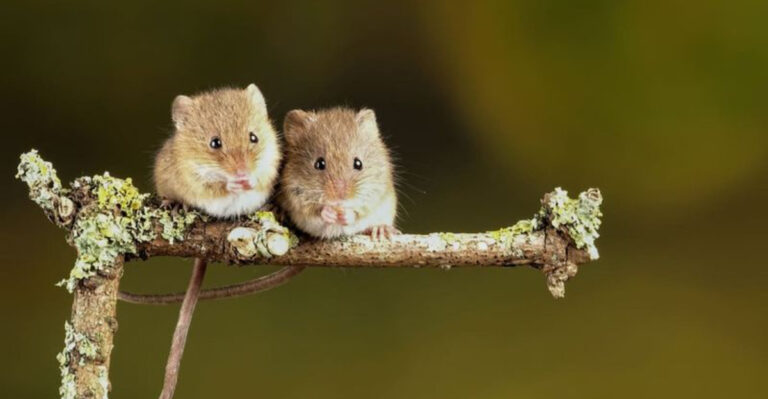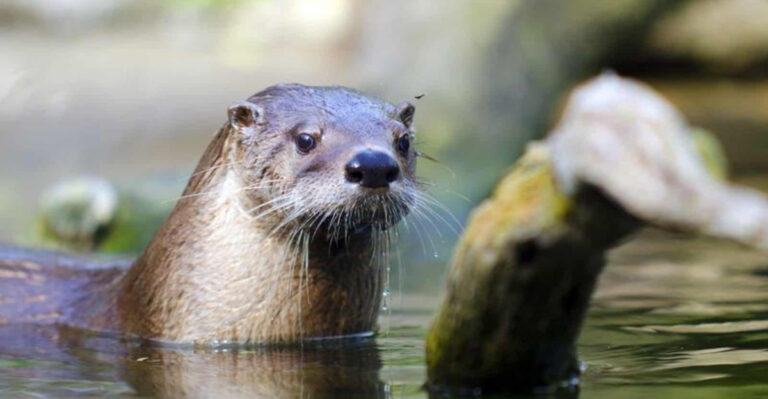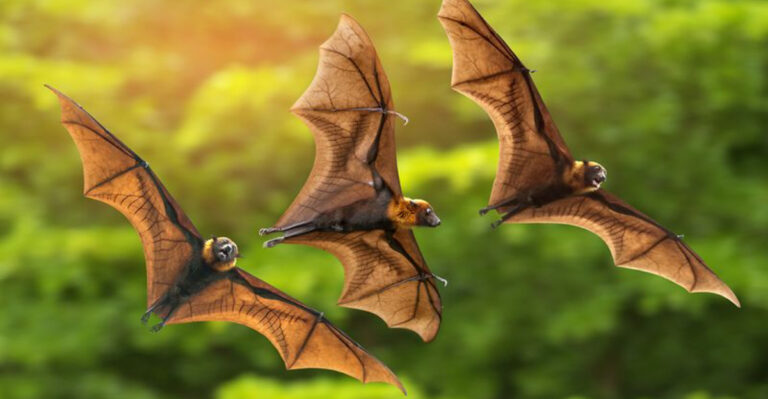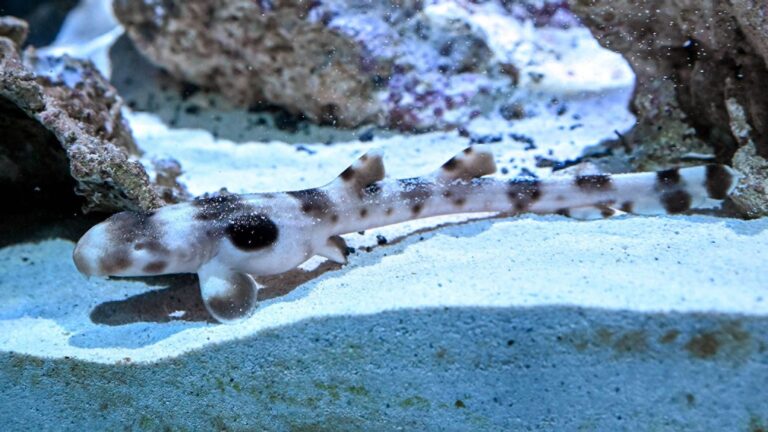12 Fascinating Traits That Make The Tasmanian Devil A True Survivor
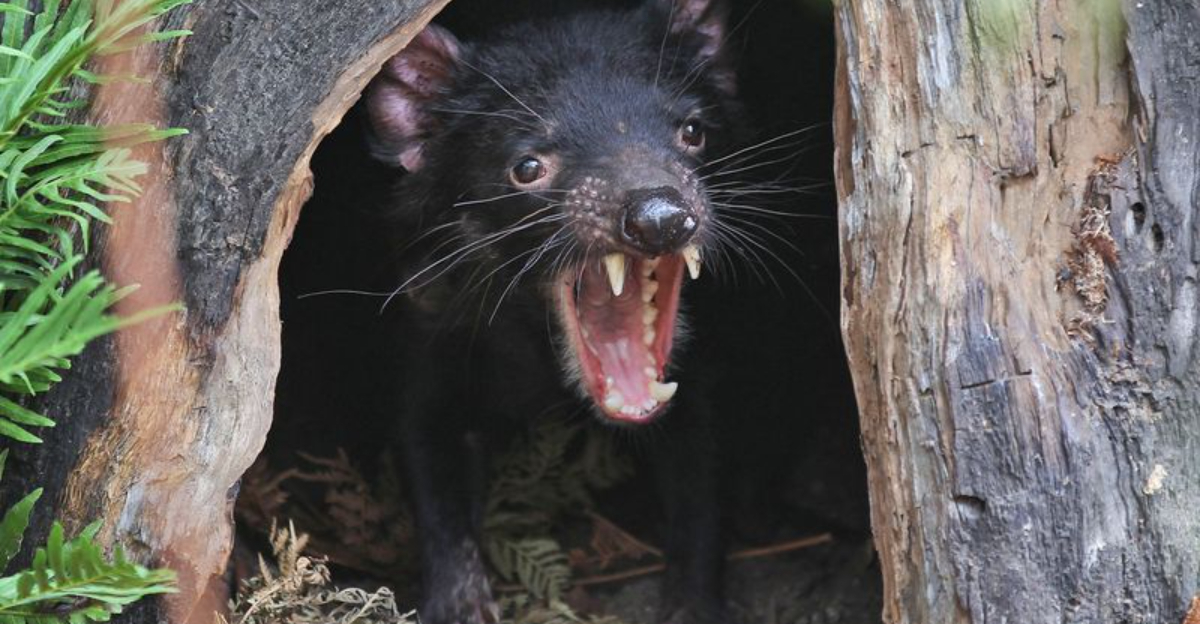
Ever wondered what makes the Tasmanian Devil such a resilient little creature? With their feisty nature and unique adaptations, these critters are true survivors of the wild.
Let’s dive into the fascinating traits that help them thrive in the rugged landscape of Tasmania, Australia. From their powerful jaws to their mysterious nocturnal habits, the Tasmanian Devil is a marvel of nature that never fails to surprise.
So, buckle up as we explore these twelve extraordinary traits that make the Tasmanian Devil an icon of endurance and strength.
1. Mighty Jaws

With jaws that could rival a mini bulldozer, the Tasmanian Devil’s bite is nothing short of legendary.
These compact creatures can crunch through bones with ease, thanks to their incredibly strong jaws and sharp teeth. This trait helps them scavenge efficiently, leaving no morsel behind.
In the wild, this ability ensures they make the most of every meal, vital for their survival. This bone-crushing prowess is not just for show – it’s a key survival strategy.
2. Nocturnal Nature
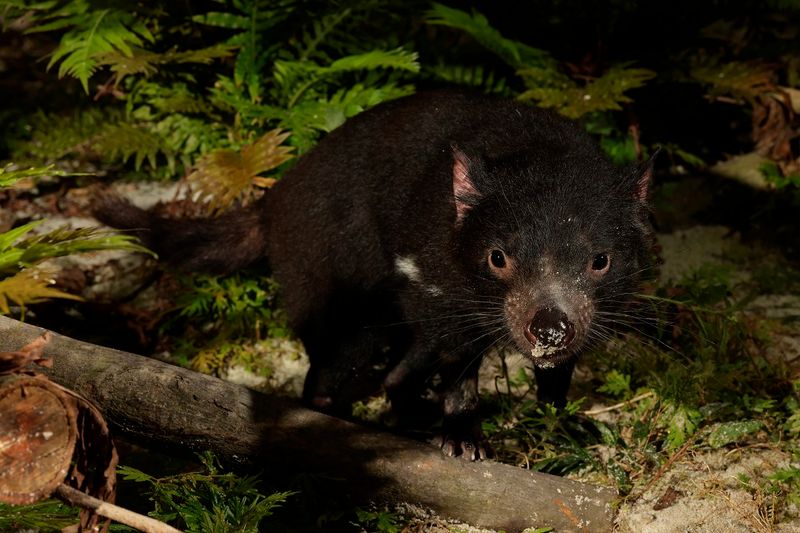
Under the soft glow of moonlight, the Tasmanian Devil comes to life.
These creatures are primarily nocturnal, prowling through the night with a keen sense of smell. This nocturnal lifestyle helps them avoid the heat of the day and reduces competition for food.
Their night-time adventures are filled with the excitement of hunting and scavenging. This stealthy habit not only keeps them cool but also away from daytime predators, making it a clever survival tactic.
3. Unique Vocalizations
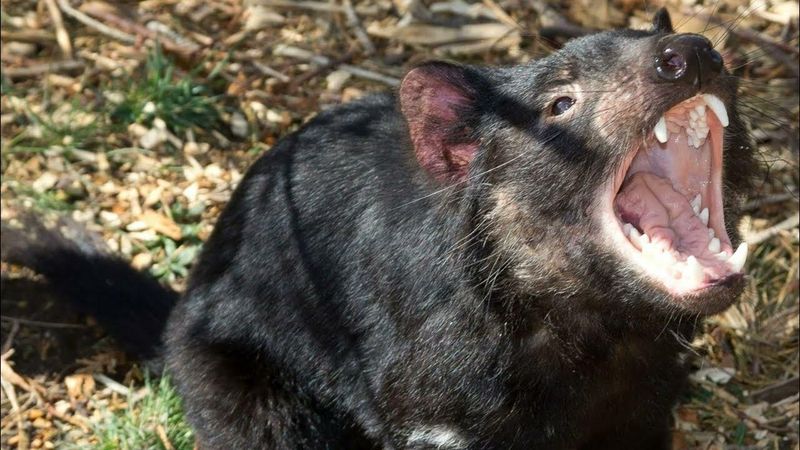
The Tasmanian Devil isn’t just about looks – its voice is a show-stopper too.
Known for their spine-chilling screeches, growls, and snorts, these vocalizations serve multiple purposes. They communicate during social interactions and ward off potential threats.
These sounds can be heard over long distances, warning others of their presence. This vocal prowess helps maintain social structures and ensures that each devil knows their place in the intricate social hierarchy.
4. Solitary Lifestyle
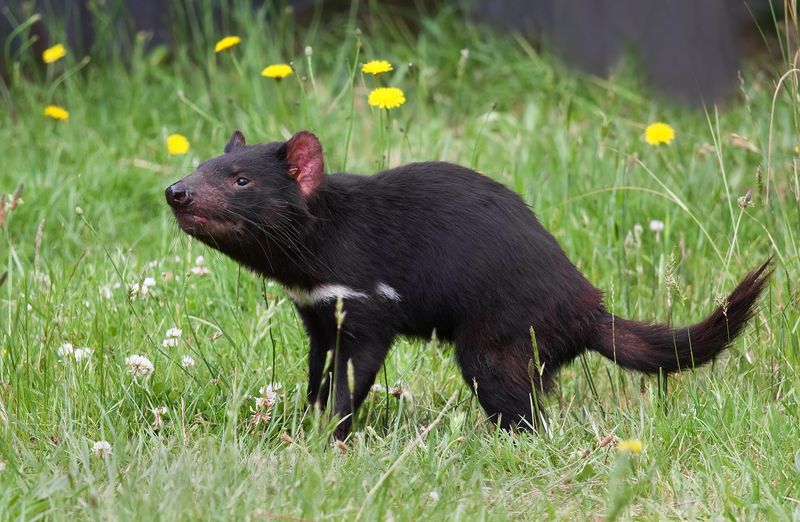
Playing the lone wolf role suits the Tasmanian Devil just fine.
These creatures prefer a solitary lifestyle, wandering the wilderness alone. This independence reduces competition for food and mates, allowing them to thrive without relying on others.
Navigating the wild solo has its perks, providing them the freedom to roam vast territories. This solitary nature is a testament to their adaptability and survival instincts, making them formidable survivors in the wild.
5. Remarkable Agility
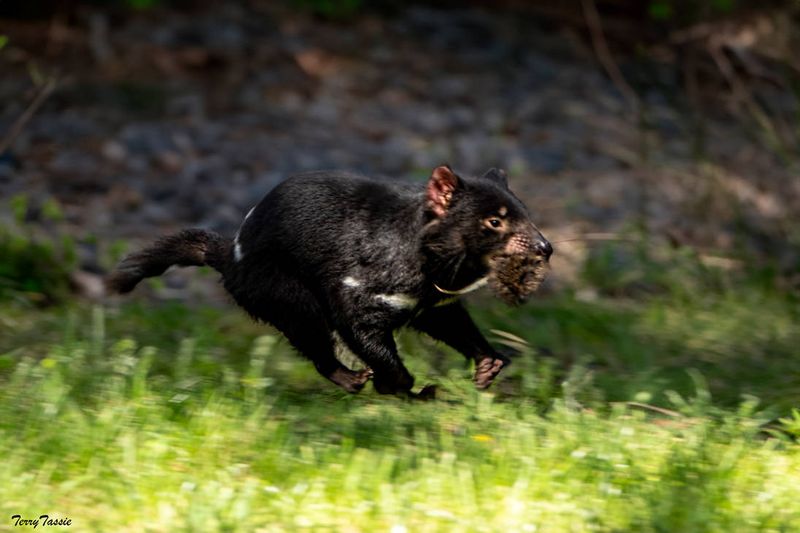
Don’t be fooled by their stout bodies – Tasmanian Devils are surprisingly agile and fast. They can zip through the underbrush with impressive speed, a handy trait when chasing down prey or escaping threats.
Their nimble movements allow them to twist and turn effortlessly, navigating the dense Tasmanian forests with ease.
This agility is vital for survival, whether they’re on the hunt or evading danger. It’s like having a built-in survival mechanism that keeps them one step ahead.
6. Powerful Senses
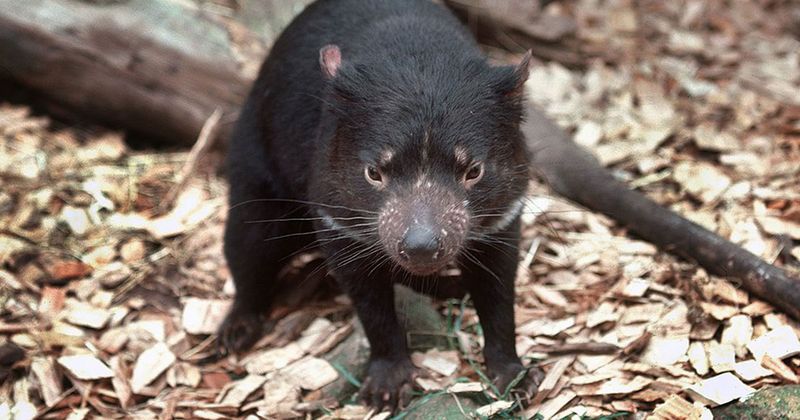
With senses as sharp as a detective’s instincts, the Tasmanian Devil is always on the alert. Their exceptional sense of smell and keen hearing make them formidable hunters, even in the dark.
They can detect food from afar, ensuring they never miss a meal. This sensory prowess also alerts them to potential dangers, keeping them safe in the wild.
With such acute senses, they’re always in tune with their surroundings, making survival second nature.
7. Dense Fur Coat
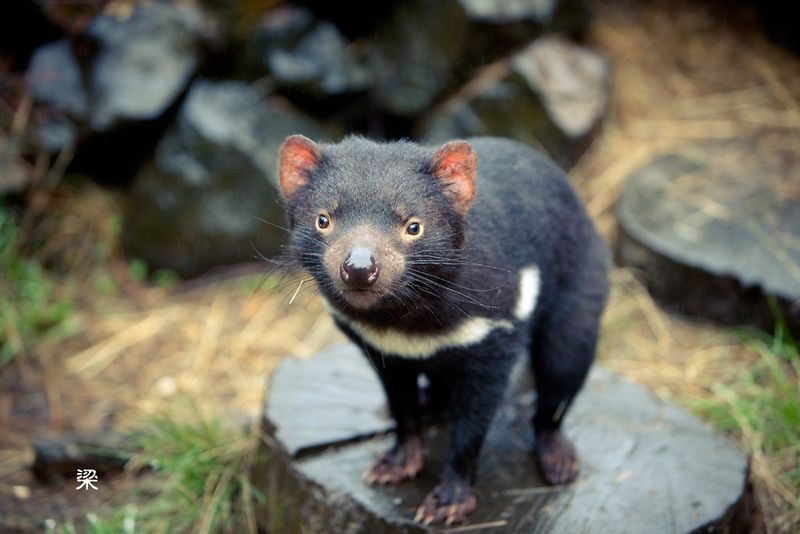
Wrapped in a dense coat of fur, the Tasmanian Devil is well-equipped to face the elements. Their thick fur provides insulation against the chilly Tasmanian nights, ensuring they stay warm and protected.
This natural armor also serves as a barrier against rough terrain and underbrush. It’s like wearing a cozy, protective blanket that’s always ready for the unpredictable wild.
This adaptation is essential for their survival, providing warmth and comfort in the harshest conditions.
8. Efficient Scavenger
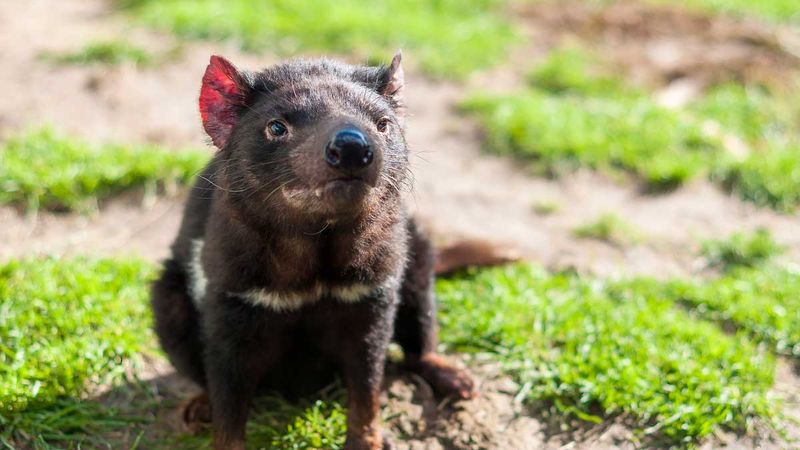
The Tasmanian Devil is nature’s cleanup crew, excelling as an efficient scavenger. They have a knack for finding food, even in the most unlikely places.
Their powerful jaws and keen senses help them devour every scrap, leaving nothing wasted. This scavenging ability is crucial, especially in environments where food can be scarce.
By making the most of every opportunity, they ensure their survival and maintain the balance of their ecosystem. It’s a testament to their resourcefulness and adaptability.
9. Fearless Attitude
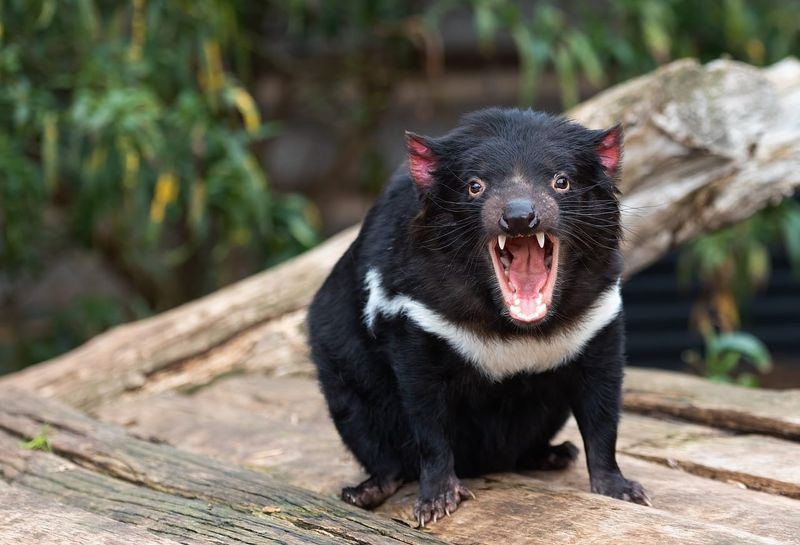
Bold and unyielding, the Tasmanian Devil doesn’t back down easily. Their fearless nature makes them formidable opponents, even when faced with larger predators.
This bravery is a key survival trait, as it allows them to defend their territory and resources fiercely. It’s like having an indomitable spirit that refuses to be intimidated.
Such boldness ensures they stand their ground, proving that size isn’t everything when it comes to survival.
10. Mysterious Social Behavior
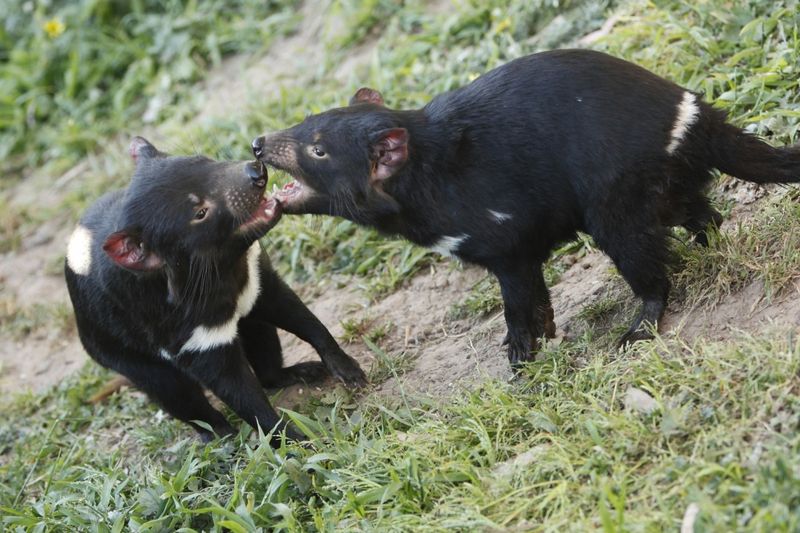
While often solitary, Tasmanian Devils have a mysterious social side. During feeding or mating, they showcase a complex social structure.
These interactions are filled with unique behaviors, from vocalizations to physical posturing. It’s a fascinating glimpse into their world, revealing a side that’s rarely seen.
Understanding these behaviors is key to appreciating their social dynamics and survival strategies. It’s like discovering a hidden layer of their enigmatic personality.
11. Adaptability To Environment
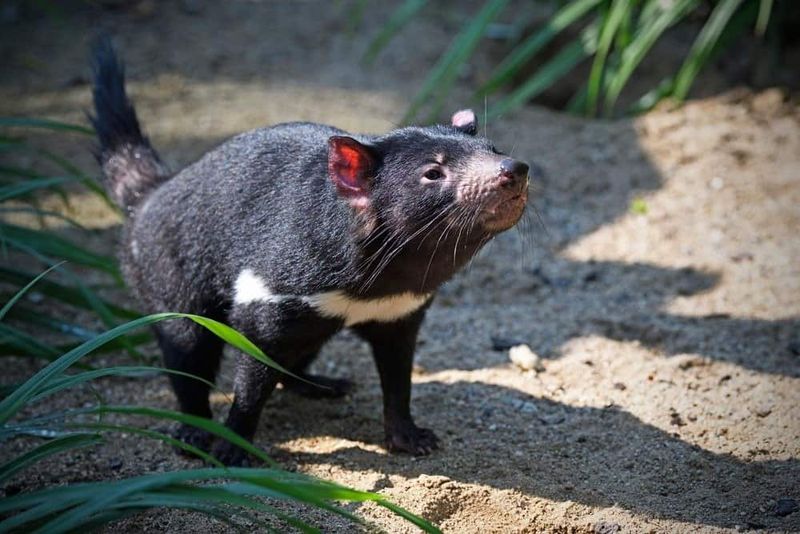
In the ever-changing landscape of Tasmania, adaptability is crucial. The Tasmanian Devil’s ability to thrive in diverse environments is a testament to their survival skills.
Whether navigating dense forests or open fields, they adjust their behavior accordingly. This flexibility allows them to exploit various habitats, ensuring a steady food supply and safety.
It’s a survival trait that underscores their resilience and ingenuity, making them true masters of adaptation.
12. Rapid Reproduction
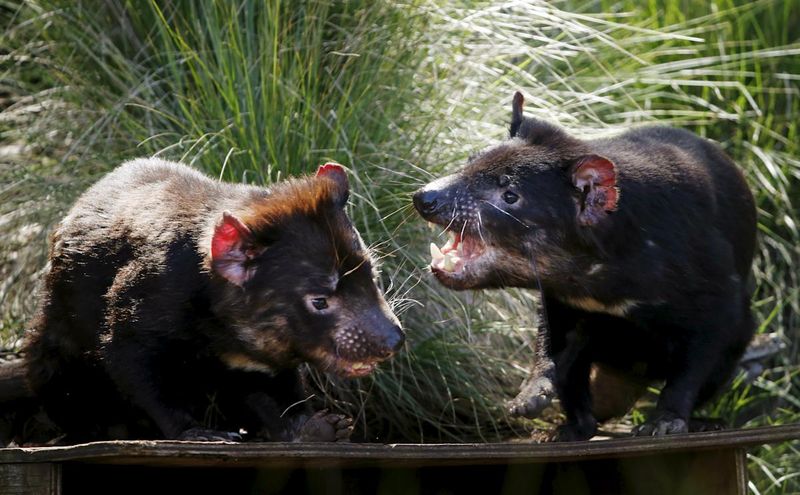
Talk about a nursery on fast-forward! Tasmanian Devils are known for their rapid reproduction, a strategy vital for their population’s survival.
Females can give birth to up to 50 tiny joeys, though only a few survive. This high birth rate compensates for natural losses, ensuring the continuity of their species.
It’s a numbers game where every new life counts, helping them rebound from population declines. Their ability to reproduce quickly is crucial for their ongoing survival in the wild.

